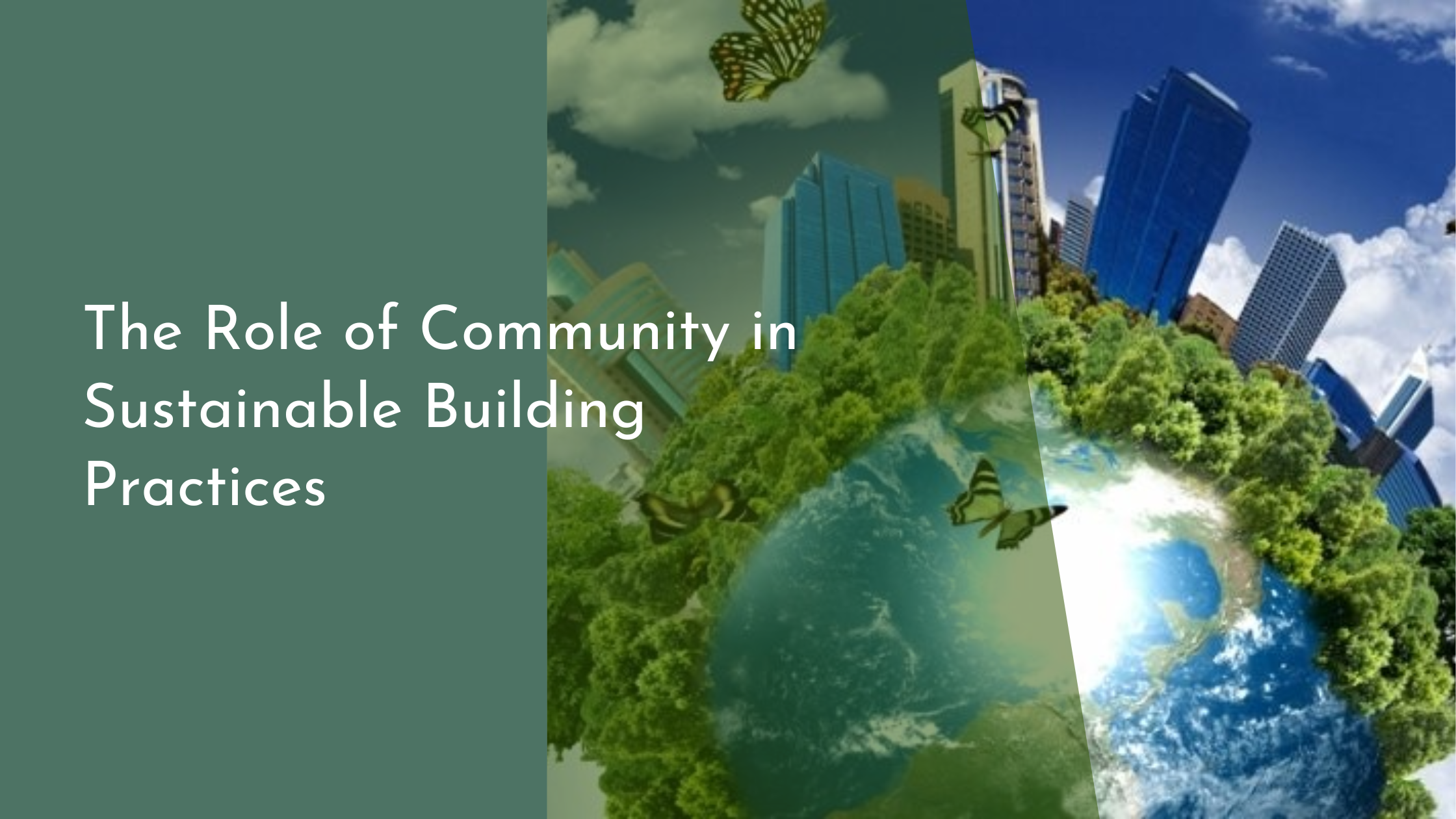The Role of Community in Sustainable Building Practices
In an era where environmental consciousness is more important than ever, sustainable building practices have emerged as a critical approach to developing eco-friendly and energy-efficient structures. Across the globe, communities are playing an increasingly pivotal role in this movement, driving innovative projects and helping to reimagine the built environment. By embracing collaboration and harnessing local knowledge, communities are not only contributing to sustainable development but also fostering a greater sense of ownership and connection to their surroundings. In this article, we explore the intricate relationship between community involvement and sustainable building practices, highlighting the transformative power of local engagement.
Understanding Sustainable Building Practices
Sustainable building practices focus on reducing the environmental impact of construction and promoting energy efficiency throughout the lifecycle of a building. This involves the conscientious selection of materials, efficient use of resources, and the integration of renewable energy systems. Techniques such as passive solar design, rainwater harvesting, and green roofing are just a few examples of how sustainability can be woven into the fabric of modern architecture. By prioritizing these methods, we can minimize waste, reduce carbon footprints, and create healthier living spaces for present and future generations.
While technological advancements play a crucial role in sustainable development, the fundamental principles are deeply rooted in a respect for the environment and a commitment to preserving natural resources. This philosophy extends beyond individual buildings, encouraging sustainable urban planning and the creation of green spaces that benefit entire communities. By fostering a holistic approach, sustainable building practices aim to harmonize the needs of humanity with those of the planet, ensuring a balance that supports both ecological and social well-being.
The Power of Community Collaboration
Community collaboration is essential in promoting and implementing sustainable building practices. When local residents, businesses, and organizations come together with architects and planners, they can share insights, ideas, and resources that lead to more innovative solutions. This collective approach not only enhances the creativity and feasibility of projects but also strengthens community bonds and encourages shared responsibility for the environment. Whether through neighborhood workshops, public forums, or cooperative developments, collaboration ensures that sustainable initiatives reflect the unique needs and values of the people they serve.
Moreover, community involvement can accelerate the adoption of sustainable practices by increasing awareness and education about their benefits. When individuals understand the positive impacts of eco-friendly construction, they are more likely to support and advocate for such projects in their neighborhoods. This grassroots momentum can inspire further initiatives and create a ripple effect, encouraging other communities to follow suit. By tapping into the power of collective action, communities can drive meaningful change and contribute significantly to the global sustainability movement.
Innovative Projects Driven by Local Involvement
Throughout the world, numerous innovative projects have been successfully realized through active community involvement. For instance, in Freiburg, Germany, the Vauban district stands as a model of sustainable urban living. Developed with significant community input, the district features energy-efficient homes, extensive green spaces, and robust public transportation options, demonstrating the potential of collaborative planning. Residents were instrumental in voicing their preferences for car-free streets and renewable energy use, resulting in a thriving eco-community that prioritizes quality of life and environmental stewardship.
Similarly, the BedZED (Beddington Zero Energy Development) project in London showcases the impact of community-driven design in sustainable building practices. Initiated by a local environmental charity, BedZED was developed through partnerships with local authorities and residents to create a zero-carbon housing development. The project incorporates solar panels, water-saving technologies, and sustainable materials, all while fostering a strong sense of community through shared spaces and facilities. These examples illustrate how local involvement not only enriches sustainable building projects but also enhances their long-term success and acceptance.
Concluding Thoughts on Community’s Impact
The role of community in sustainable building practices cannot be overstated. By actively participating in the planning and development process, communities help ensure that projects are tailored to their specific environmental, social, and economic contexts. This localization not only increases the effectiveness and relevance of sustainable initiatives but also empowers individuals, instilling a sense of pride and ownership over their built environment. As we move towards a more sustainable future, community engagement remains a vital component of meaningful and lasting change.
In conclusion, sustainable building practices offer a promising path towards a more environmentally conscious future, and communities are at the heart of this transformation. Their involvement brings unique perspectives, fosters innovation, and builds momentum that drives broader adoption of sustainable practices. By continuing to champion community collaboration and engagement, we can create resilient, vibrant, and sustainable environments for generations to come. Together, we have the power to reshape our world for the better, one sustainable building project at a time.

